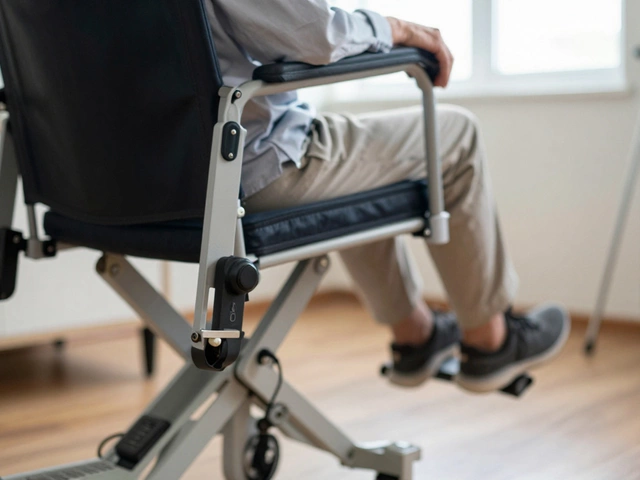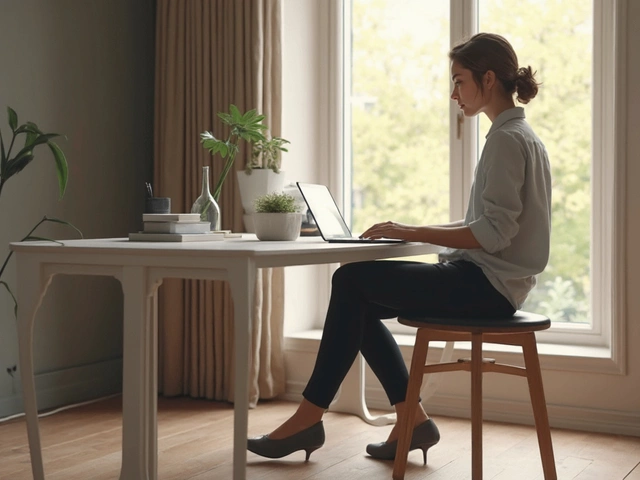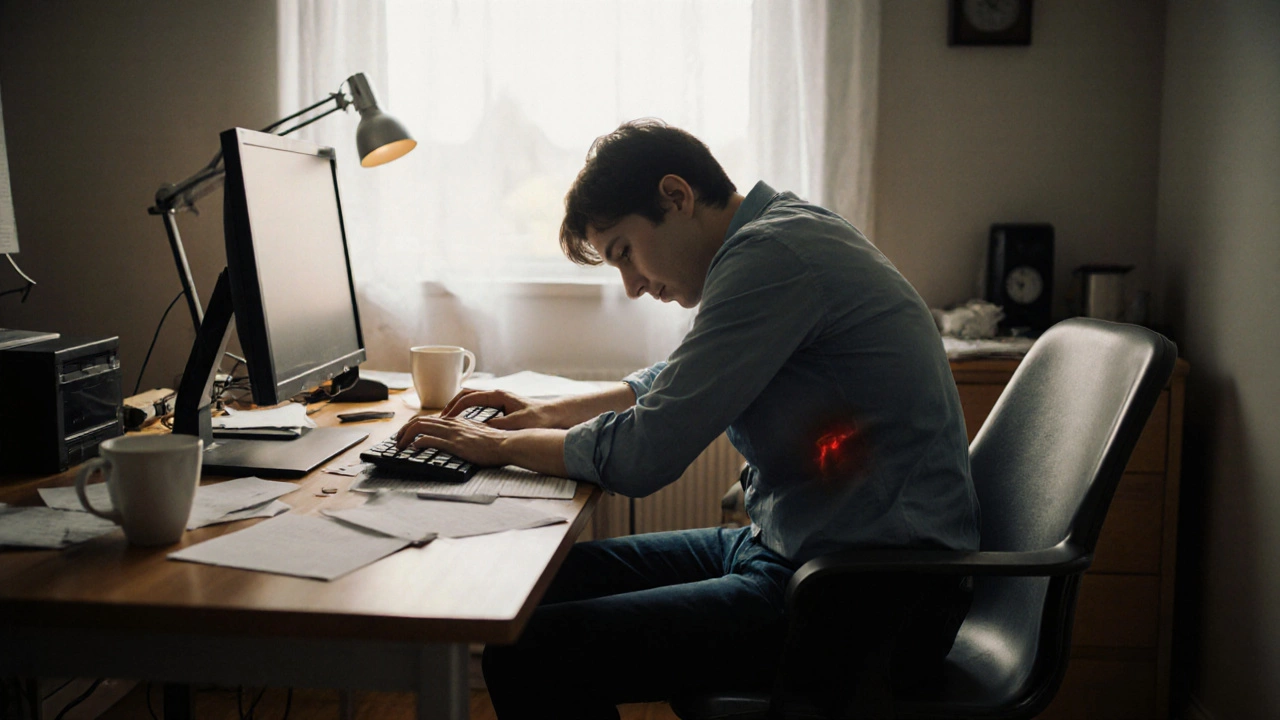 30
Oct,2025
30
Oct,2025
Ever sat in a cheap office chair for eight hours and felt like your spine had been through a wringer? You’re not imagining it. A good office chair doesn’t just feel nicer-it changes how your body works, how much you get done, and even how long you can keep working without pain.
It’s not just about comfort-it’s about your spine
Most office chairs under $150 are built like they’re meant for a quick coffee break, not a full workday. They lack proper lumbar support, have thin padding that flattens out in weeks, and don’t adjust to your body. Over time, that forces your lower back into a C-curve, which strains the discs and muscles. A 2023 study from the University of Melbourne’s Ergonomics Lab tracked 120 remote workers for six months. Those using adjustable ergonomic chairs reported a 68% drop in lower back pain compared to those using standard office chairs.
Here’s what actually matters in a good chair:
- Lumbar support that fits the natural curve of your lower back-not just a fixed pillow that slides around.
- Adjustable seat depth so your thighs are fully supported without pressure behind your knees.
- Armrests that let your shoulders relax, not hunch up.
- Height and tilt adjustment so your feet stay flat and your hips are slightly higher than your knees.
These aren’t luxury features. They’re basic biomechanical requirements. Without them, your body is constantly compensating. That’s why people who sit all day with bad chairs often develop tight hips, rounded shoulders, and headaches from leaning forward to see their screen.
Productivity isn’t just about focus-it’s about staying seated
Think about how often you get up during the day. Not because you need coffee, but because your chair hurts. You stretch, you walk to the printer, you lean against the wall. A bad chair turns your desk into a standing desk by default.
A good chair reduces those involuntary breaks. One 2024 study from a Sydney-based tech firm found that employees using ergonomic chairs completed 12% more focused tasks per day. Why? Because they weren’t distracted by discomfort. They didn’t have to mentally calculate how long they could sit before needing to stand. Their body wasn’t screaming for relief.
It’s the same reason athletes don’t train in worn-out sneakers. Your chair is your workstation’s foundation. If it’s unstable, everything else wobbles-even your concentration.
Long-term health isn’t optional-it’s financial
Let’s talk numbers. In Australia, work-related musculoskeletal disorders cost businesses over $1.5 billion a year. Back pain alone accounts for nearly 40% of those claims. That’s not just sick days-it’s reduced output, retraining, and insurance hikes.
Employers who invest in quality chairs see lower absenteeism and fewer workers’ comp claims. But even if you’re self-employed or working from home, the cost isn’t just financial. It’s physical. One bad chair can lead to chronic pain that lasts years. And once your spine starts degenerating, no amount of yoga or painkillers will fully reverse it.
Compare that to the cost of a good chair: $300-$600. That’s less than one month’s rent if you’re renting a home office. Or the price of two months of coffee deliveries. It’s an investment that pays off every day you don’t wince when you sit down.
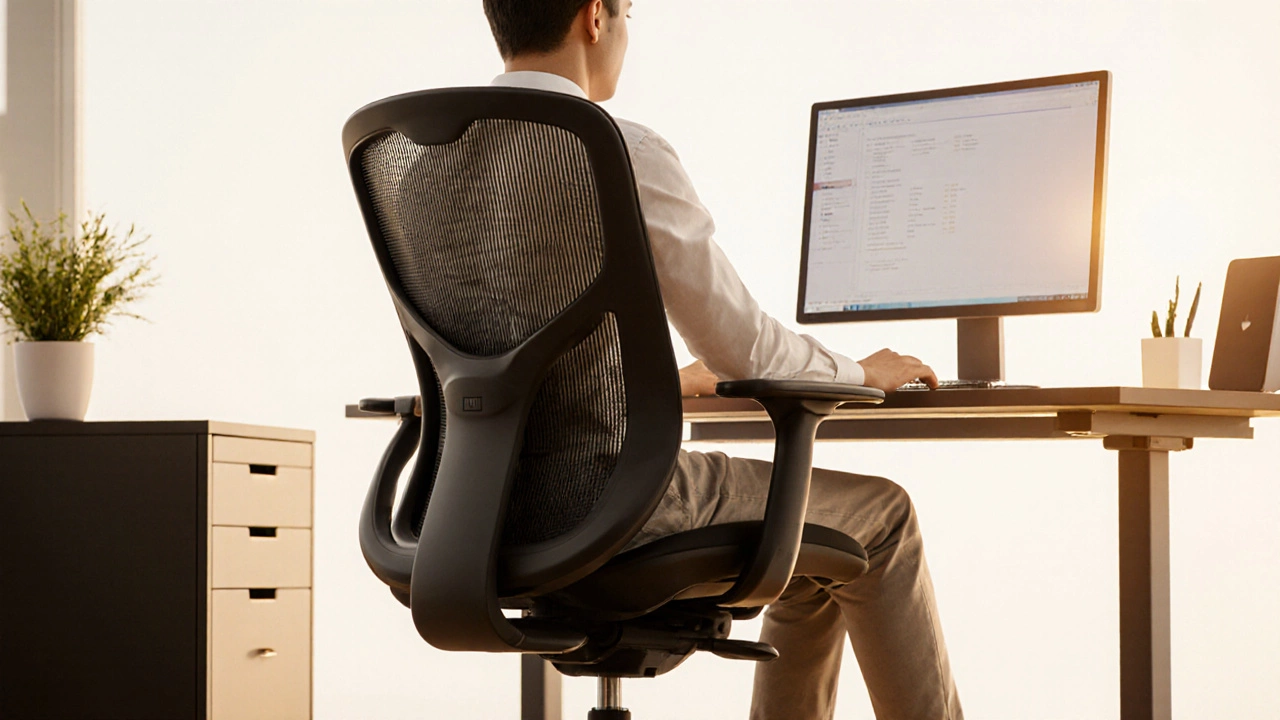
What’s the difference between a 0 chair and a 0 chair?
It’s not magic. It’s materials and engineering.
A $100 chair might have:
- A plastic base that cracks after a year
- Fixed, non-adjustable backrest
- Foam padding that compresses into a flat pancake
- No armrests, or armrests that wobble
A $500 chair (like the Herman Miller Aeron or Steelcase Leap) has:
- PostureFit or similar adaptive lumbar system that moves with you
- Mesh back that breathes and supports evenly
- Hydraulic lift that doesn’t sink after six months
- Armrests that adjust in four directions
- 12-year warranty because they’re built to last
Here’s a quick comparison:
| Feature | Under $150 | $300-$600 |
|---|---|---|
| Lumbar Support | Fixed or absent | Adjustable, contoured, dynamic |
| Seat Depth Adjustment | No | Yes |
| Armrest Adjustability | None or 1 direction | 4+ directions |
| Material Quality | Thin foam, plastic | High-density foam, breathable mesh |
| Warranty | 1-2 years | 5-12 years |
| Weight Capacity | Up to 220 lbs | Up to 350+ lbs |
The cheaper chair might look fine on Day 1. But after six months, the padding collapses. The tilt mechanism sticks. The gas lift hisses. And suddenly, you’re paying $200 for a new chair-and still not getting the support you need.
Who really needs a good chair?
Everyone who sits for more than four hours a day. That’s not just office workers. It’s writers, coders, designers, students, remote teachers, freelancers, even people who binge-watch shows for hours. If your job involves staring at a screen and typing, your chair is part of your toolkit.
And it’s not just about pain. It’s about energy. When your body isn’t fighting discomfort, your brain isn’t draining resources to ignore it. You feel less tired. You think clearer. You’re less irritable.
One teacher in Adelaide switched from a dining chair to a mid-range ergonomic chair and noticed her afternoon focus improved within a week. "I stopped checking the clock every 20 minutes," she said. "I could just work."
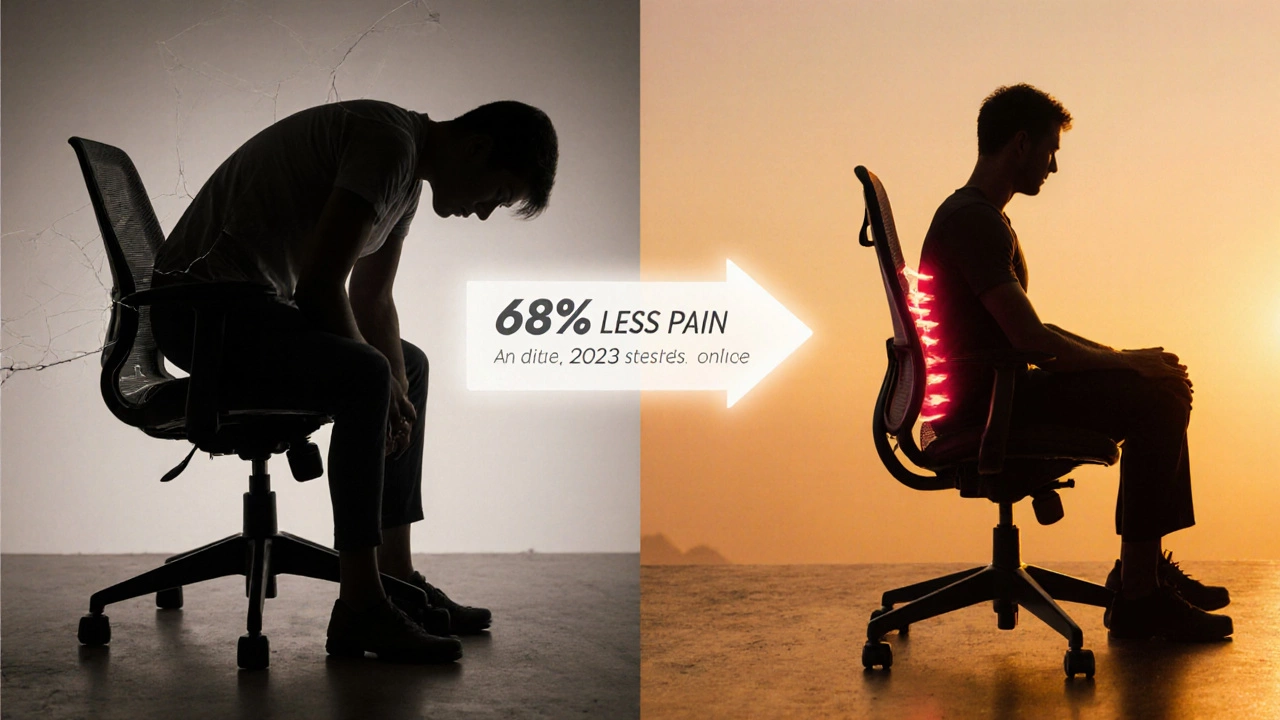
What if you can’t afford a 0 chair?
You don’t need the most expensive one. But you do need to avoid the cheapest.
Look for these non-negotiables:
- At least $200. Anything less rarely lasts.
- Adjustable lumbar support-even if it’s a simple strap.
- A seat that doesn’t feel like a plastic bowl.
- At least one armrest you can move up/down.
- Reviews from people who’ve used it for 6+ months.
Try this trick: Sit in the chair for 15 minutes before buying. Don’t just test it for five seconds. Sit with your feet flat, your screen at eye level, and your arms relaxed. If you’re still shifting around after 10 minutes, walk away.
Second-hand is fine. Many companies replace chairs every 3-5 years. You can find nearly new ergonomic chairs on Facebook Marketplace or local office supply liquidators for half price. Just check the base, the gas lift, and the mesh for tears.
It’s not the chair-it’s how you use it
A good chair won’t fix bad habits. You still need to move. Stand up every 30-45 minutes. Walk around. Stretch. Use a footrest if your feet don’t reach the floor. Adjust your monitor so you’re not craning your neck.
But here’s the thing: a good chair makes those habits easier. It doesn’t fight you. It supports you. It doesn’t punish you for sitting too long. It helps you sit longer-without breaking.
Think of it like running shoes. You wouldn’t run a marathon in flip-flops. Why sit for 8 hours in a chair that’s basically a plastic throne with wheels?
Bottom line: The difference is real
A good office chair doesn’t just make sitting better. It makes working better. It reduces pain. It boosts focus. It saves money over time. It protects your body for decades.
It’s not about luxury. It’s about function. Your body is your most important tool. Don’t let your chair undermine it.
If you sit at a desk, you need a good chair. Not someday. Not when you can afford it. Now. Because every hour you spend in a bad one is a hour you’re paying for-with your health.
Can a cheap office chair cause long-term back problems?
Yes. Poorly designed chairs force your spine into unnatural positions, leading to muscle strain, disc compression, and posture-related pain. Over months or years, this can contribute to chronic conditions like herniated discs or sciatica. A 2023 study found that workers using non-ergonomic chairs were 3.5 times more likely to develop persistent lower back pain than those with proper support.
Is it worth spending $500 on an office chair?
If you sit 6+ hours a day, yes. A $500 chair lasts 8-12 years. That’s less than $50 a year-or about 14 cents a day. Compare that to the cost of physical therapy, lost work time, or pain medication. The return on investment isn’t just comfort-it’s long-term health and productivity.
What’s the best brand for office chairs?
Herman Miller, Steelcase, and Humanscale are industry leaders known for durability and ergonomic design. But brands like Secretlab, Autonomous, and Haworth offer excellent value at lower price points. The best brand is the one that fits your body and budget-not the most expensive one.
Do mesh chairs really work better than padded ones?
For most people, yes. Mesh provides even support and breathes better than foam, which traps heat and compresses over time. Mesh chairs like the Herman Miller Aeron or Steelcase Leap adapt to your shape without losing support. Foam chairs can feel soft at first but often sink unevenly, creating pressure points.
How do I know if my current chair is bad?
If you feel discomfort after 30 minutes, if your back aches by lunchtime, if the armrests don’t adjust, if the seat feels flat or too hard, or if the chair wobbles when you lean back-it’s time to replace it. Your body is giving you signals. Don’t ignore them.



